The INBT is collecting donations for the Hopkins Food Pantry. The Hopkins Pantry serves to tackle food insecurity at Johns Hopkins by providing students, staff, and faculty with an alternative resource. They accept donations of non-perishable, non-expired food products, and hygiene products.
Food: peanut butter; jelly; granola bars/breakfast bars; nuts and seeds (in sealed packages/ containers); dried fruits; canned pasta, soup, tuna, and vegetables; cereal (large boxes or individual cups); oatmeal; crackers; rice; pasta; pasta sauce; ramen; dried/ canned beans; coffee (instant); boxed meals, ready-to-eat meals.
Toiletries: toilet paper, toothbrush, shampoo, conditioner, body wash/soap, deodorant, feminine
hygiene products
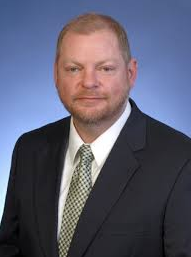
“Addressing the Dual Challenge Through Advanced Separations: From Materials to Process Scale Up”
ExxonMobil has been developing advanced separation concepts focused on some of the highest impact hydrocarbon separation processes to address the challenges of supplying affordable energy while reducing emissions. McCool will discuss the research portfolio of the separations and process chemistry group at ExxonMobil’s Corporate Strategic Research and the processes with potential to dramatically reduce the carbon and physical footprint of critical operations.
Ben McCool is Section Head, Separations and Process Chemistry, ExxonMobil Corporate Strategic Research in Annandale NJ. His research interests include transport in inorganic and polymeric membranes, gas and liquid separations, membrane reactors and process conceptualization
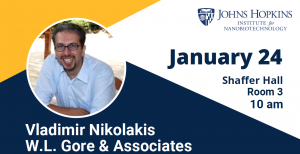
Exploring the Effects of Liquid in the Pore Network of Sorbent Polymer Composites on Transport and Adsorption for the Removal of Hg from Flue Gas
Abstract: Emissions of mercury, a toxic substance, from industrial flue gas stacks are regulated in many countries around the world. Several technologies are being developed to address the decreasing emission limits. W.L. Gore & Associates Inc. has developed an innovative technology, called the GORE™ Mercury Control System (GMCS) [1], for addressing this need. The GMCS is a unique fixed sorbent system that also provides SO2 removal as a co-benefit. It is based on discrete stackable modules comprised of Sorbent Polymer Composite (SPC) materials with an open channel geometry. Hg is chemisorbed from the flue gas and bound into the SPC. On the other hand, SO2 is converted to sulfuric acid filling a fraction of the SPC pores. However, due to the hydrophobic nature of the SPC, the liquid acid is expelled preventing the flooding of the entire pore network with liquid, which would have an adverse effect on Hg capture rates.
A reactor model that describes the transport & reaction steps taking place during Hg capture in GMCS will initially be presented, and will be used to highlight the importance of knowing the fraction of liquid into the SPC tape pores. Characterizing the pore network of the SPC tapes is a challenging task not only because the pore sizes span several orders in magnitude, but also because measurements need to happen at dry and 100% relative humidity conditions. Emphasis will be placed on how we combined a set of complimentary techniques (Hg intrusion, N2 & H2O physisorption, and X-ray computed tomography) to obtain a 3-D reconstruction of the dry and wet SPC pore network and how this reconstruction was analyzed to get information about the porosity and tortuosity of wet and dry SPC tapes. Finally, we will show an example of how we used this information together with the reactor model to quantify the impact of liquid in the SPC on Hg removal rate.
Biography: Vlad Nikolakis is a scientist at W.L. Gore and Associates Inc. since 2015. Before joining Gore, he was a Principal Researcher at the Institute of Chemical Engineering Sciences; Patras; Greece (2002-2012) and the Associate Director of Research at the Catalysis Center for Energy Innovation; Univ. of Delaware (2011-2015). He got his Chemical Engineering Diploma from Aristotle University of Thessaloniki (1995) and his Ph.D. from University of Massachusetts Amherst (2001). His research interests are in the areas of materials development, & characterization coupled with reaction engineering to improve catalytic conversions or separations. He co-authored more than 65 publications in peer-reviewed journals, and he’s a co-inventor in one patent.
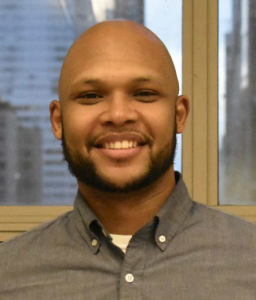
Cellular Phenotypes Get Physical: Lessons From Aging Lymphoma
Abstract: As we age, cells within organs and tissues undergo profound biophysical and biomolecular changes, which significantly influence the rate of functional decline in humans. Working under the premise that age-related dysfunctions at the clinical scale is related to propagated cellular defects, I will present data showing that aging information is encoded within biophysical properties of cells, and can therefore be used as robust biomarkers of aging. These findings are important as it provides a proof-of-concept, and a hypothetical framework that can be used to stratify individuals based on ageing trajectories in both health and disease. In the context of disease, diffuse large b-cell lymphoma is an aggressive and common type of lymphoma, with peak incidence in individuals 65 to 74 years old. Currently, my work focuses on a critical and understudied aspect of lymphoma biology, geared towards understanding the role of the stromal microenvironment in creating a pro-lymphoma niche. By asking questions regarding the biomolecular and biophysical properties of lymphomas, i.e. tumor mechanics, cellular and extracellular matrix (ECM) composition and architecture, and molecular information (i.e. genetic, proteomic), we gain a better understanding of how stromal re-programming and matrix remodeling shape the lymphoma microenvironment. My long term vision for this line of work is to identify exploitable targets within the microenvironment for eventual clinical implementations.
Biography: Jude is currently a postdoctoral associate at Weill Cornell Medicine in the laboratories of Leandro Cerchietti and Ari Melnick, where he studies the role of the stromal microenvironment in creating a pro-lymphoma niche. Prior to his postdoc, Jude received his PhD in Chemical and Biomolecular engineering at Johns Hopkins University with Denis Wirtz, where he developed a cell-based platform to determine the cellular age of healthy individuals based on biophysical properties of their cells. Jude also holds a bachelor of engineering degree in Chemical Engineering from the City College of New York.
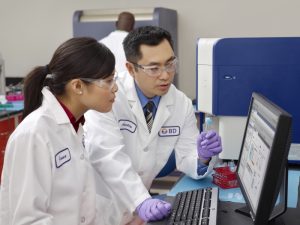
Want to get experience working in an industry setting? Want to receive college credit and a salary? If so, please join us for an information session about our Masters Co-Op program. To broaden the practical training for Master of Science in Engineering (MSE) students in the Whiting School of Engineering, INBT collaborates with major industry partners to offer a Co-Op opportunity to incoming MSE students in the Materials Science and Engineering, Mechanical Engineering and Chemical and Biomolecular Engineering programs.
Go our Masters Co-Op webpage to learn more and then come with questions to the information session. You’ll meet Camille Mathis and Luke Thorstenson who run the program.
Food and beverages will be served.
Join May 14 at 11:00 am for the virtual AccelHERator seminar. Please register to receive webinar access
You are invited to learn how academic investigators can position their science to compel industry stakeholders and develop the relationships with corporate and investor partners that will help bring their discoveries to market.
This session includes a 30-minute “Pitching best practices” seminar and a conversation led by Christy Wyskiel, Executive Director of Johns Hopkins Technology Ventures, with Jill Carroll(JHSOM ’99), Principal at S.R.One, a global biotech venture capital firm founded in 1985 by GlaxoSmithKline (GSK).
About the AccelHERator: A new year-long pilot program to nurture female inventors and applied research, the AccelHERator celebrates the community of Johns Hopkins women whose academic ingenuity will change the world.
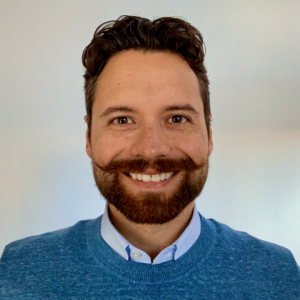
Please join us for a seminar with Netz Arroyo, INBT associate faculty member. Join us using the Zoom information below.
https://wse.zoom.us/j/93459776858?pwd=S01FNDRGS0tTVHc4enBoYi9XbmpuQT09
Meeting ID: 934 5977 6858
Password: 114461
“Continuous, Real-Time monitoring of Small-Molecule Therapeutics in the Body”
Abstract: Personalized drug therapy seeks to tailor treatment to the individual, taking into consideration each person’s unique genotype and metabolism to determine a dose that maximizes drug efficacy and avoids toxicity. Realizing this goal has been extremely challenging, however, for two main reasons. First, it is difficult to determine the optimal drug dose for each patient due to our limited understanding of pharmacogenetics and physiology. Second, even the most sophisticated drug delivery approaches fail to account for hour-to-hour fluctuations in an individual’s metabolism driven by changes in health status, diet or drug interactions. Thus, there remains a pressing need for technologies supporting the real-time, in-vivo monitoring of drugs that would enable patient-specific, metabolism-responsive dosing. In response to this need, our laboratory pursues the development of reagentless sensing approaches that support continuous molecular measurements in the body. During this talk, I will describe an electrochemical approach that relies on DNA aptamers to perform real-time monitoring of small molecule targets, and the use of this approach to study pharmacokinetic changes in rats that originate from biological and metabolic variability.
Biography: Netz Arroyo is an Assistant Professor in the Department of Pharmacology and Molecular Sciences at the Johns Hopkins University School of Medicine. He has secondary appointments with Chemical and Biomolecular Engineering, Biochemistry, Cellular and Molecular Biology, and the Chemistry-Biology Interface programs. He received his B.S. in Chemical Sciences from Tec de Monterrey (Mexico), his Ph.D. degree in Analytical Chemistry from the University of Texas at Austin, and his postdoctoral training in Bioengineering from the University of California Santa Barbara. Dr. Arroyo’s research focuses on the development of electrochemical biosensing platforms that enable continuous, real-time measurements of specific molecules in the body. His lab employs such sensors to study molecular transport of therapeutics across biological barriers in vivo, and to develop decentralized, high-precision diagnostics for health care monitoring.

“Image-based” Vascular Phenotyping In Cancer, Tissue Engineering And Neuroscience”
Please join us for a seminar with associate faculty member Arvind Pathak.
Zoom link: https://wse.zoom.us/s/97783644656
Webinar ID: 977 8364 4656
Password: 501459
Abstract
This lecture will highlight the development of multiscale and multimodality imaging approaches in conjunction with novel computational and visualization tools to revolutionize our understanding of the role of blood vessels in cancer, tissue engineering and neuroscience applications. This lecture will showcase new functional imaging methods; image-based systems biology approaches; and the design of new imaging systems and software tools for characterizing the vascular microenvironment. Collectively, these innovations herald a new era in “image-based” phenotyping in preclinical models.
Biography
Dr. Arvind P. Pathak is Associate Professor of Radiology and Oncology at the Johns Hopkins University School of Medicine and a member of the Johns Hopkins Kimmel Cancer Center. His work focuses on developing new imaging methods, computational models and visualization tools to ‘make visible’ critical aspects of cancer, neurobiology and tissue engineering.
Dr. Pathak received his BS in electronics engineering from the University of Poona, India, in 1993, and in 2001 completed his PhD in Functional Imaging from the joint graduate program between the Biophysics Department at the Medical College of Wisconsin and the Biomedical Engineering Dept at Marquette University. During his PhD he was the recipient of a Whitaker Fellowship. After a postdoctoral fellowship in the Molecular Imaging Program at Johns Hopkins University, he joined the Johns Hopkins faculty in 2003.
Dr. Pathak’s research has been recognized by several awards and journal covers. These include the Bill Negendank Young Investigator Award from the International Society for Magnetic Resonance in Medicine (ISMRM) given to “outstanding young investigators in the field of cancer MR” and the ISMRM’s Outstanding Teacher Award for 2014. He has advised over sixty students and is a much sought after mentor.
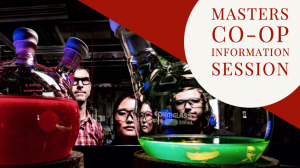
Please join us for a virtual information session to learn about the INBT’s Masters Industry Co-Op Program.
To broaden the practical training for Master of Science in Engineering (MSE) students in the Whiting School of Engineering, INBT collaborates with major industry partners to offer these students a six-month Co-Op opportunity that provides industry experience, a salary, and college credit. This program is currently only available to students in the Departments of Materials Science and Engineering, Mechanical Engineering, and Chemical and Biomolecular Engineering.
Go to the Masters Co-Op website to learn more about the program.
*The Co-Op program is still active during the COVID-19 pandemic.
Zoom information
Link: https://wse.zoom.us/j/92452322817
Webinar ID: 924 5232 2817
Telephone: Dial (for higher quality, dial a number based on your current location): US: 1-301-715-8592 or 1-646-558-8656 or 1-312-626-6799 or 1-253-215-8782 or 1-346-248-7799 or 1-669-900-6833
BME Presents: Ngan Huang, PhD
Assistant Professor of Cardioghoracic Surgery Research
Stanford University
Host: Warren Grayson & Sharon Gerecht

Engineering the Microsvasculature of Regenerative Medicine
Bio: Ngan F. Huang is an Assistant Professor in the Department of Cardiothoracic Surgery at Stanford University and Principal Investigator at the Veterans Affairs Palo Alto Health Care System. Dr. Huang completed her BS in Chemical Engineering from the Massachusetts Institute of Technology, followed by a PhD in bioengineering from the University of California Berkeley & University of California San Francisco Joint Program in Bioengineering. Prior to joining the faculty, she was a postdoctoral scholar in the Division of Cardiovascular Medicine at Stanford University. Her laboratory investigates the interactions between stem cells and extracellular matrix microenvironment for engineering cardiovascular tissues to treat cardiovascular and musculoskeletal diseases. Dr. Huang has authored over 70 publications and patents, including reports in Nat Med, PNAS, and Nano Lett. She has received numerous honors, including a NIH K99/R00 Career Development Award, Fellow of the American Heart Association, a Young Investigator award from the Society for Vascular Medicine, a Young Investigator Award from the Tissue Engineering and Regenerative Medicine International Society-Americas, and a Rising Star award at the Cell & Molecular Bioengineering conference. Her research is funded by the NIH, Department of Defense, California Institute of Regenerative Medicine, and Department of Veteran Affairs.


